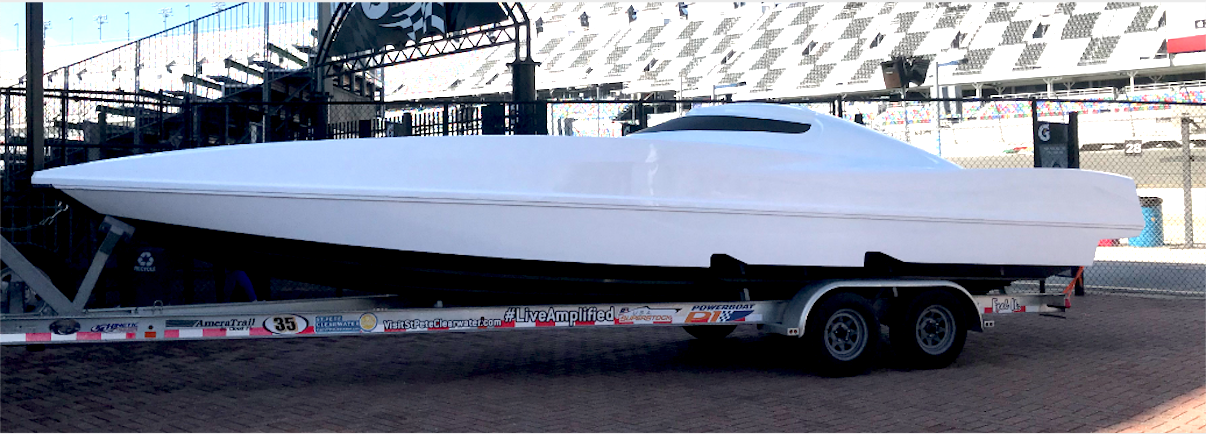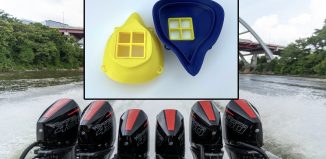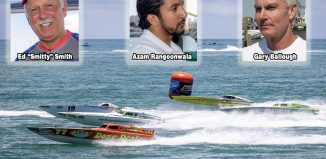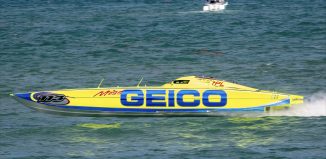New Canopied P1 Race Boat Taking Shape
The team at Powerboat P1 reports that the upgrading of its new Panther powerboat—which is at the heart of the P1 SuperStock one-design race series—is in full swing, and the focus this month will be on carrying out an extensive and rigorous testing program both in lake conditions in Florida and on the challenging waters of the Atlantic.
Following the fitting of new carbon hulls to the fleet last year, the boats will be repowering for the 2019 season with new, four-stroke outboard engines and converting to closed canopy craft. Last July, Mercury Racing announced that their all-new 300R V-8 outboard will replace the legacy two-stroke 300XS as the exclusive power for the 2019 P1 SuperStock USA race series.
Rick Mackie, PR & Communications Manager at Mercury Racing, believes the SuperStock teams are going to be impressed: “They will experience a noticeable improvement in acceleration – particularly useful when powering out of turns—together with an increase in top-end speeds. Our Mercury propellers will deliver best performance and handling—racing is not all about straight line speed. It’s exciting to have our consumer products used in this highly competitive, one-design racing environment. There is no better way to prove their performance and durability.”
Having carried out the hull replacement work on the P1 USA fleet last winter, specialist boat builders Wilson Custom Composites—whose owner Craig Wilson has almost 20 years of racing experience—is now focused on fitting the boats with a closed canopy, which involves the use of cutting-edge technology and materials. Working closely with Martin Sanborn, who was one of the lead developers of the P1 Panther some eight years ago, Wilson is now taking the boat to the next level through utilizing the resources of the Performance Boat Center in South Florida. He explains that the move to the canopy configuration will have a number of important results including enhanced safety for the crews, improved race performance and the change from a mechanical control system to a digital throttle and shift system which will increase responsiveness and simplify the rigging process for the boats.
Sanborn points out that the work being carried out is compliant with current UIM and APBA certification, and he is keen to highlight the safety and performance benefits that will result from the canopy system: “The canopy and cockpit feature a carbon composite structure that’s both light and exceptionally strong. Engineering, that includes a complex integration of a polycarbonate windscreen and receiver together with recessed carbon hatches, is targeted with aerodynamic, hydrodynamic and mechanical impact considerations to provide maximum protection for the racers. On top of the significant weight loss from the hull replacement programme a year ago, the boats will see another reduction resulting in a lowering of the vertical center of gravity and better handling.”
Wilson adds: “Powerboat P1 is leapfrogging the marine industry by having the most technically advanced, full safety canopy system and interior available. The DD-compound racing seats are carbon/glass with billet aluminum brackets and stainless steel runners. They are tested to withstand huge G-forces and we fit a 6-point harness and full SCUBA system.”
While this upgrade work progresses, the race crews will be undergoing specialized training and certification that will include ‘dunker tests’ in the new Panther. Similarly, members of the Powerboat P1 safety team will undergo familiarisation training in all aspects of the new safety systems.
P1 chief executive Azam Rangoonwala describes the upgrade program as a “world-class team of specialists harnessing advanced technology and materials to produce a high-speed racing work of art.” He concludes by saying: “The principal objectives are to improve the race performance of the boats, enhance safety on the water and attract new racers to the series. The 2019 Panther will look sleek and stylish, but maintain the character of the original deck design. It’s going to be fast and nimble, and will require 100% of the skills each crew brings to the series.








